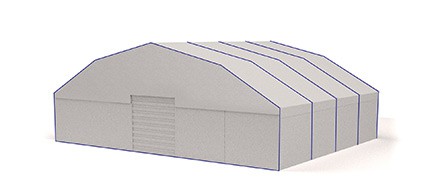Temporary Building Trends: Predictions for the Future
In recent years, the temporary building sector has experienced significant growth, driven by innovative solutions and an ever-increasing demand for flexible, cost-effective space. As we look ahead, certain trends are set to shape the future of this dynamic industry.
Current Market Analysis of the Temporary Building Sector
The temporary building sector is currently witnessing a surge in demand across various industries. From retail stores seeking additional storage space to factories requiring temporary expansion, these structures are providing a versatile solution to a range of spatial challenges.
Moreover, the rise of e-commerce has further fuelled the need for temporary storage buildings, as businesses scramble to manage increased inventory levels and fulfilment demands. The ability to rapidly install and dismantle these structures and no need for traditional foundations, coupled with their customisability, has cemented their place as a go-to solution for businesses in need of quick and adaptable space solutions. Whether it’s for a Car Dealership or a growing warehouse, temporary building trends show that temporary structures are a solution that is in high demand, and is here to stay.
Predicted Growth and Factors Driving the Demand
The global temporary building market is predicted to continue its upward trajectory, spurred on by several key factors. Firstly, rapid urbanisation and industrialisation across developing regions are leading to a greater demand for temporary buildings. Secondly, the increasing preference for cost-effective and eco-friendly construction methods is also contributing to the market’s expansion.
Furthermore, the ongoing COVID-19 pandemic has highlighted the need for extra space across various sectors, including healthcare and retail, driving further growth in the market.
Evolving Customer Expectations and How Temporary Building Trends Can Meet Them
Customer expectations are continually evolving, with a growing emphasis on sustainability, flexibility, and bespoke solutions. In response, temporary building trends predict greener construction options, using recyclable materials and energy-efficient designs.
Moreover, suppliers are enhancing their service offerings to include fully customisable buildings tailored to the client’s specific needs. This level of personalisation, coupled with the inherent flexibility of temporary buildings, allows businesses to quickly adapt to changing market conditions and operational requirements.
Planning for the Future: How to Choose a Temporary Building Provider
Choosing the right temporary building provider is crucial to maximising the benefits of this flexible space solution. When selecting a provider, consider their experience, product range, customisation options, and after-sales service.
Ensure they can offer a building that meets your specific needs, whether that’s a fully insulated structure for temperature-sensitive goods or a large-scale warehouse for inventory storage. Additionally, look for providers who can offer guidance on whether hiring or purchasing a temporary building would best suit your business’s future plans.
In conclusion, as the temporary building sector continues to evolve, businesses need to stay abreast of the latest trends and predictions. By doing so, they can make informed decisions, ensuring they choose the right solutions and providers to support their growth and success in the future.

